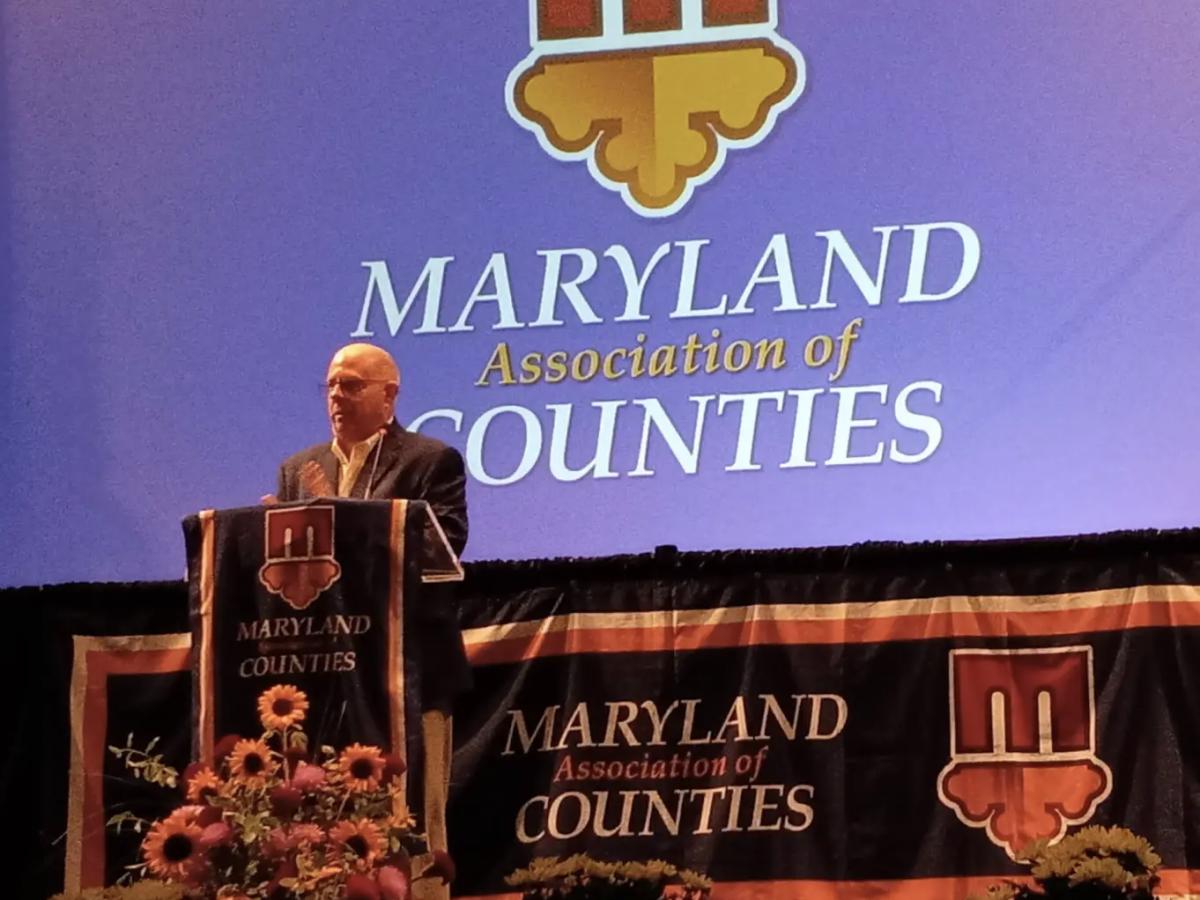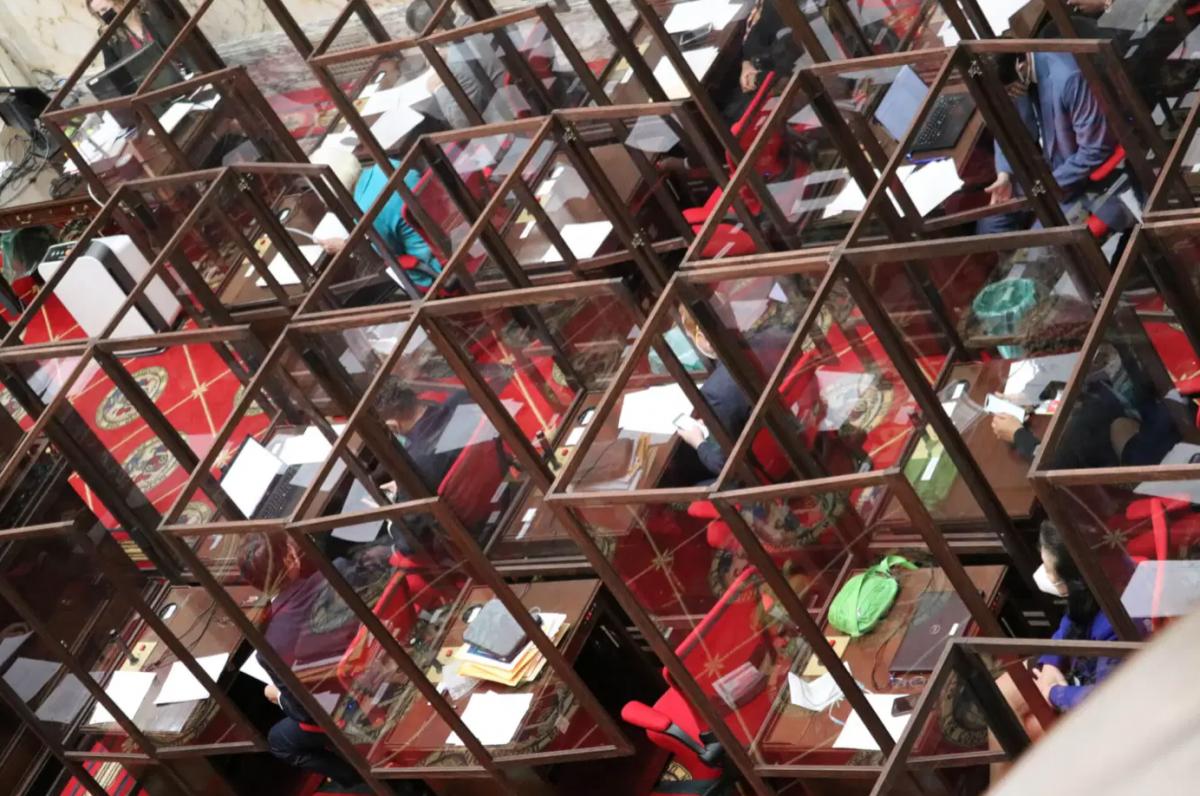In his penultimate gubernatorial speech at the annual Maryland Association of Counties summer conference, Gov. Lawrence J. Hogan Jr. (R) touted the state’s high vaccination rate and pandemic relief funding — and urged counties to quickly distribute that money to residents who need it.
Closing out the MACo summer conference at the Roland E. Powell Convention Center in Ocean City Saturday, Hogan outlined a slew of relief measures the state has undertaken from the onset of the pandemic, including the emergency funding and tax breaks in the RELIEF Act passed earlier this year.
“It has offered a real lifeline to those hardest-hit, families who are struggling just to get by and small businesses who are desperately trying to stay afloat,” he said.
He also cautioned that, while counties have recently received rent relief funding from the federal government, some of that money has been slow to get to residents and businesses.
“I just can’t emphasize enough how important it is for you to try to get this relief out to the people that need it most as quickly as possible,” he said.
Some county officials have blamed federal red tape and cumbersome applications for slow progress on distributing rent relief funding. Hogan’s statewide protections for tenants, which allowed for an affirmative defense in failure-to-pay rent eviction filings, expired earlier this month despite calls from local leaders and advocates to renew them.
After three days of policy panels and partying, the MACo summer conference traditionally ends on Saturday with a speech from the governor. Often the platform is used to unveil new proposals or for political messaging.
Caroline County Commissioner Wilbur Levengood Jr. (R), the president of MACo, accidentally began to introduce Hogan, who is thought to have White House ambitions, as “the 62nd president…governor of the state of Maryland.” He laughed at the mistake.
During his speech, Hogan underscored the partnership between the state and county governments in Maryland over the past year and a half. He said counties and the state worked together to ramp up the state’s hospital surge capacity, procure and distribute personal protective equipment, complete millions of COVID-19 tests and undertake a massive vaccination campaign that has led to Maryland’s high statewide vaccination rate.
“It’s never been more important to have the collaboration and the partnership that we’ve had over the past 18 months,” he said.
The governor went on to say that transportation officials will be rolling out a new consolidated transportation program that will include funding for expanding Route 90 near Ocean City — a project he described as both a boon for public safety and the local economy.
Hogan also highlighted the state’s latest $400 million broadband expansion effort, the Connect Maryland initiative, which he announced alongside legislative leaders Friday. Broadband access, made more salient than ever by the COVID-19 pandemic, was among the most discussed topics at the 2021 MACo summer conference.
While in past years Hogan has occasionally slammed legislation from the General Assembly in his closing speech at MACo, this year’s speech mostly focused on state aid to counties and pandemic recovery. Other than teasing the transportation plan and mentioning his desire to focus on Maryland’s long-term public health and economic well-being, the governor offered no policy prescriptions or initiatives for his final 16 months in office.
Hogan lauded local officials and health care workers for their service throughout the pandemic.
“I’m so proud of the people of Maryland, and I’m grateful for the partnership with the Maryland Association of Counties,” Hogan said. “We are ready to come back from this pandemic stronger and better than ever before.”
By Bennett Leckrone




